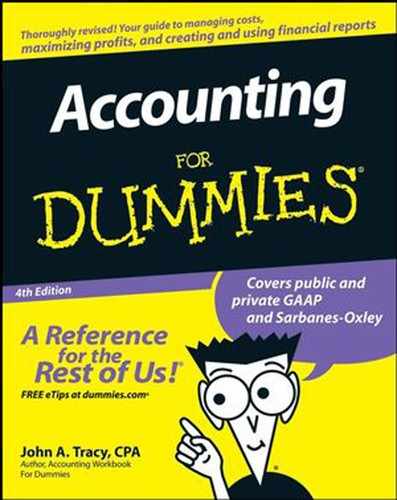11.1. Looking down the Road to the Destination of Costs
All businesses that sell products must know their product costs — in other words, the costs of each and every item they sell. Companies that manufacture the products they sell — as opposed to distributors and retailers of products — have many problems in figuring out their product costs. Two examples of manufactured products are a new Cadillac just rolling off the assembly line at General Motors and a copy of my book, Accounting For Dummies, 4th Edition, hot off the printing presses.
Most production (manufacturing) processes are fairly complex, so product cost accounting for manufacturers is fairly complex; every step in the production process has to be tracked carefully from start to finish. Many manufacturing costs cannot be directly matched with particular products; these are called indirect costs. To arrive at the full cost of each product manufactured, accountants devise methods for allocating indirect production costs to specific products. Surprisingly, generally accepted accounting principles (GAAP) provide very little authoritative guidance for measuring product cost. Therefore, manufacturing businesses have more than a little leeway regarding how to determine their product costs. Even businesses in the same industry — Ford versus General Motors, for example — may use different product cost accounting methods.
Accountants determine many other costs, in addition to product costs:
The costs of departments, regional distribution centers, and other organizational units of the business
The cost of the retirement plan for the company's employees
The cost of marketing programs and advertising campaigns
The cost of restructuring the business or the cost of a major recall of products sold by the business, when necessary
A common refrain among accountants is "different costs for different purposes." True enough, but at its core, cost accounting serves two broad purposes: measuring profit and providing relevant information to managers for planning, control, and decision-making.
The conundrum is that, in spite of the inherent ambiguity in determining costs, we need exact amounts for costs. In order to understand the income statement and balance sheet that managers use in making their decisions, they need to understand a little bit about the choices an accountant has to make in measuring costs. Some cost accounting methods result in conservative profit numbers; other methods boost profit, at least in the short run.
This chapter covers cost concepts and cost measurement methods that apply to all businesses, as well as basic product cost accounting of manufacturers. I discuss how a manufacturer could be fooling around with its production output to manipulate product cost for the purpose of artificially boosting its profit figure. (Service businesses encounter their own problems in allocating their operating costs for assessing the profitability of their separate sales revenue sources.)
